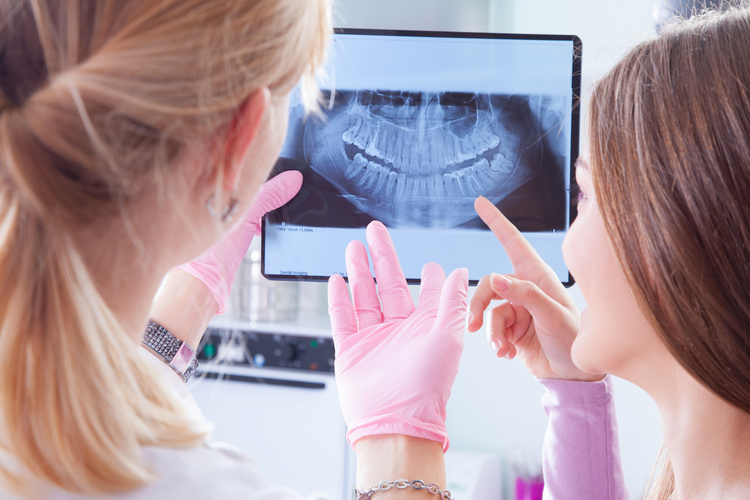"Don't dental x-rays cause brain tumors?" This is a real concern held by some dental patients who believe for whatever the reason that they may be at risk for excessive radiation exposure. Whether a patient is emphatically refusing x-rays, expressing mere curiosity, or asking about an article they vaguely remember reading, this is an opportunity for you to build trust and peace-of-mind by clearly explaining why x-rays are important in your diagnosis and treatment process.
We asked Meribeth Brown, a Practice Advisor for Total Patient Service, to share some ideas for discussing x-rays with patients. Enter Meribeth...
There will always be patients who refuse to take dental x-rays, whether because they are scared due to cancer or think you are only taking them for a billable reason. This can be a hinderance for many dentists. If a patient refuses x-rays, the dentist may still be held responsible at a later date should the patient have a medical problem that was not identified and discussed.
These 25 reasons might be helpful in navigating a conversation with someone who needs some additional understanding:
-
To determine the presence of hidden decay or cavities
-
To determine the presence of a dental abscess or pustule
-
To determine the presence of a cyst
-
To determine the presence of tumors (benign or malignant)
-
To determine whether to remove primary or baby teeth
-
To determine if complete complement of permanent teeth is present
-
To determine the condition of root canal filled teeth
-
To determine condition of deep fillings
-
To determine if decay or cavities are present in abnormal areas
-
To determine the condition of supporting bone
-
To determine the presence of impacted teeth
-
To determine if extra (supernumerary) teeth are present
-
To determine the amount of bone destruction due to periodontal disease
-
To determine the strength of teeth for supportive fixed bridges
-
To determine the depth of periodontal abscess
-
To determine the presence of ill-fitting restorations
-
To determine the reason for pressure sensitivity
-
To determine the presence of fractured roots
-
To determine the presence of foreign bodies
-
To determine the condition of the supporting bone for an implant
-
To locate a fistula track
-
To locate hidden calculus
-
To observe root involvement with the sinuses
-
To determine the presence of abnormally shaped roots
-
To aid us in seeing where we cannot see and help you maintain your teeth for a lifetime
No matter the fear, sometimes simply helping patients understand the "why" behind what we do is the key to building a new level of trust and understanding.
Thanks to Maribeth Brown for this blog post.

Raised as the daughter of a dentist, her first experience in the dental office as a young girl was helping with every job possible. Her first full-time position was as a dental assistant, a career that lasted for over twenty-one years.
She went on to train new dental assistants as the director of her own dental assisting school and then into the management of multiple practices.
For over ten years she has coached, trained and helped dental practices across the country reach new levels of productivity as a Practice Advisor with the Total Patient Service Institute.
 (800) 691-7234
(800) 691-7234 answers@dw-corp.com
answers@dw-corp.com PRACTICE LOGIN
PRACTICE LOGIN


